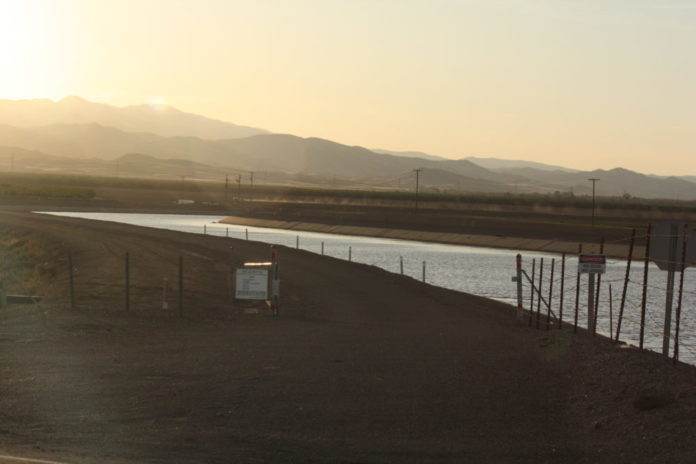This is Part One of a two part report on recharge in Westlands Water District: Westlands Water District seems to have a target on its back. Over the years it’s been blamed for so many things. There are recent accusations Westlands is turning away water it could have recharged. During the initial Central Valley Project contract conversions a few years ago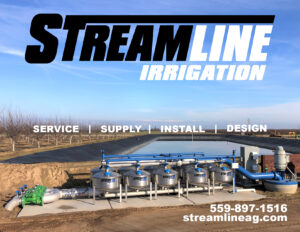 newspapers literally proclaimed Westlands converting its contract would kill salmon. In the real world the contract conversions were actually changes in the government bookkeeping process and how contractors’ debt was paid. It was a financial matter and not a change in water allocations. As you may know governmental accounting isn’t like regular business accounting. It’s not uncommon to hear the party in power’s take on budget matters to be quite different from the opposition party’s take on the exact same number.
newspapers literally proclaimed Westlands converting its contract would kill salmon. In the real world the contract conversions were actually changes in the government bookkeeping process and how contractors’ debt was paid. It was a financial matter and not a change in water allocations. As you may know governmental accounting isn’t like regular business accounting. It’s not uncommon to hear the party in power’s take on budget matters to be quite different from the opposition party’s take on the exact same number.
Something else that isn’t like regular accounting is water accounting. Before I became involved in reporting on irrigation supplies I’d see water flowing over Friant Dam on the San Joaquin River and think we’ve got plenty of water. And to be fair it is a majestic sight to see a large volume of water cascade down whether a natural waterfall or a dam. Now I know that’s a spill. The goal in dam management is to not spill. Some water is released from Millerton Lake to the river and some is released to diversions such as the Friant Kern Canal. If there’s water cresting over the dam it’s a wet year reminder you need – a bigger reservoir ala Temperance Flat – or larger, earlier releases before the snowmelt overwhelms the storage area. The amount of water in snowmelt is determined by measuring how much snow there actually is and the reasonable expectation of accurate weather forecasts. A spill over a dam means you’ve lost the opportunity to put that water to a beneficial use other than what can be captured while flowing downstream to the ocean.
Westlands doesn’t get its water from the San Joaquin River, at least not directly. Westlands gets its water from the Delta which gets its water from the San Joaquin and Sacramento Rivers. Westlands storage is at San Luis Reservoir (SLR) west of Los Banos. If you’ve driven Highway 152 from the Valley to Monterey you’ve crossed the Delta Mendota Canal (DMC), the California Aqueduct and passed between the O’Neill Forebay and the B.F. Sisk Dam while ascending up the hill to the San Luis Reservoir.
Let’s take a moment and review the plumping. For those of you who don’t know, and there was a time when none of us did, water from the Delta is pumped by the federal Jones Pumping Plant into the Delta Mendota Canal as part of the Central Valley Project (CVP); overseen by the US Bureau of Reclamation. (Delta water is also pumped by the state at the Banks plant into the Aqueduct as part of the State Water Project; overseen by the state’s Department of Water Resources.) Both the Delta Mendota Canal and the California Aqueduct flow into the O’Neill Forebay. From there the water is pumped up into San Luis Reservoir. Later the water is released back into the O’Neill Forebay and sent down either the San Luis Canal or the Aqueduct depending on who’s calling for the water. This is known as off-stream storage. Westlands’ water supply contract is with the South of Delta division of the CVP.
The state and the feds have a cooperative operation agreement that is used to determine how much of the water belongs to whom. Now you’ve got not just government accounting, you have government water accounting.
Can there be spills at San Luis Reservoir? Yes. How? That’s a good question. There is no snowpack melting into a stream that feeds the reservoir like Millerton Lake. To have a literal spill the folks who operate the system at SLR would have to pump more water uphill from the Forebay into the Reservoir and leave the thing running like an unattended garden hose before water spilled over the dam. That would be of course foolish, wasteful and insanely dangerous. The B.F. Sisk Dam is constructed of packed earth, erosion from an actual spill would be a very big problem.
So then, how does one spill off-stream storage? It’s all on paper according to water accounting. However, be sure, whether on paper or an actual loss of liquid a spill is still a lost opportunity to utilize water if – and this is a big if – if it can be utilized.
Staff Perspective
Jose Gutierrez is the Chief Operating Officer at Westlands Water District. Gutierrez explains what some have believed to be wasted water was never pumped. There is a situation known as foregone pumping.
“When San Luis Reservoir is full, the federal Jones plant has to back off pumping. If the reservoir is full the only place to divert water is from the Delta Mendota Canal. Jones had to cut back to only canal side demand,” said Gutierrez.
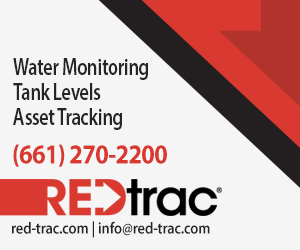 This missed amount of water is a lost opportunity to pump more at the Jones Plant. USBR estimated 150,000 a/f was foregone. There are 28 other districts with turnouts on the Delta Mendota Canal. Gutierrez isn’t alone in believing Westlands, even though the largest by acreage on the canal, isn’t the only district unable to fully benefit from water supplies that ended as up foregone pumping. There are other CVP contractors taking municipal, industrial, wildlife refuges as well as other ag contractors like the Exchange Contractors.
This missed amount of water is a lost opportunity to pump more at the Jones Plant. USBR estimated 150,000 a/f was foregone. There are 28 other districts with turnouts on the Delta Mendota Canal. Gutierrez isn’t alone in believing Westlands, even though the largest by acreage on the canal, isn’t the only district unable to fully benefit from water supplies that ended as up foregone pumping. There are other CVP contractors taking municipal, industrial, wildlife refuges as well as other ag contractors like the Exchange Contractors.
Directors’ Perspective
There are reasons Westlands wasn’t able to take all the foregone pumping. Westlands Chairman Jeff Fortune joined the board in 2022. Fortune farms 3,000 acres of almonds, pistachios and cannery tomatoes near Canuta Creek.
Fortune said the two main reasons Westlands wasn’t able to recharge the maximum amount of water that could have prevented foregone pumping are simple – not all of the land is suitable for recharge and farmers have to farm to stay in business.
“Half of my ranch is not in a recharge zone, the other half is,” said Fortune. “Without water for two-years we had to plant for economics. Ninety percent of the land that could have been recharged is being farmed. After harvest watch the recharge explode.”
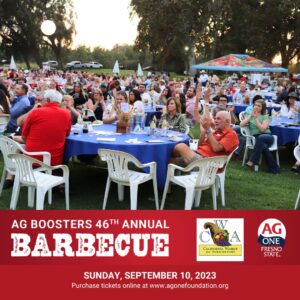 All the water contractors receiving water from the Central Valley Project have to deal with moving supply targets. Water years start in October and end the following September. The 2022-2023 water year has been extraordinary. More often than not a wet fall leads to a dry winter and spring. So early precipitation is not a reliable indication of how much supply will be available. The end of 2022 was wet. Both the USBR and DWR rely on snow surveys to estimate water supply and determine allocations. Periodically allocation numbers are released beginning in the new calendar year. The big announcement that sets the course for the year is the initial allocations announced in February and the final allocation announced in April. By then enough precipitation has fallen and been measured to make a reasonably accurate estimate to base allocations on.
All the water contractors receiving water from the Central Valley Project have to deal with moving supply targets. Water years start in October and end the following September. The 2022-2023 water year has been extraordinary. More often than not a wet fall leads to a dry winter and spring. So early precipitation is not a reliable indication of how much supply will be available. The end of 2022 was wet. Both the USBR and DWR rely on snow surveys to estimate water supply and determine allocations. Periodically allocation numbers are released beginning in the new calendar year. The big announcement that sets the course for the year is the initial allocations announced in February and the final allocation announced in April. By then enough precipitation has fallen and been measured to make a reasonably accurate estimate to base allocations on.
Unfortunately, by April it’s getting late in the season for farmers to make planting decisions. And there is a lot of decision making that goes into what to plant and how much. Financing, markets, available labor, supply chain, costs and availability of input materials such as seeds, fertilizers, tractor fuel and of course water supplies all have to be decided before a crop is grown. Farmers didn’t know there would be recharge supplies available when these decisions were being made.
Both the USBR and DWR are cognizant of this fact but they have a slew of other considerations and competing interests to deal with beyond just farming. Flood control, environmental supplies, regulatory and legislative directives and especially political meddling all impact water. In a sane society we’d prioritize a safe, reliable food supply. But this is California after all.
At the end of February, a 35 percent allocation was announced for South of Delta CVP agricultural supplies. As more data was processed the allocation changed to 80 percent in March and then 100 by late April. Fortune said at that point the planting increased causing a decrease in available recharge area. He has neighbors growing corn for the first time.
Fortune said Westlands doesn’t have water, the growers do. Westlands goes out and buys water for the benefit of all the growers.
Water comes in many colors. That’s jargon for the classification of different water categories such as state project water is a different “color” than federal water and so on. There is a category of federal water known as 215 Water. When flows are heavy the USBR will declare an uncontrolled season and make 215 Water available. This is extra water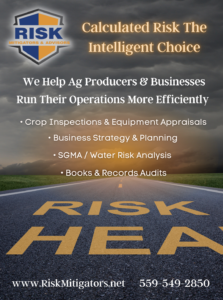 above normal flow amounts and the price is very low. In a typical year, even a dry year, there are more snowmelt flows than the system can handle for a short period. This year the uncontrolled season lasted until July.
above normal flow amounts and the price is very low. In a typical year, even a dry year, there are more snowmelt flows than the system can handle for a short period. This year the uncontrolled season lasted until July.
There is also carryover water. This is non-project water in storage that for whatever reason wasn’t fully utilized in the previous water accounting year and is available for the current year – a bit like a savings account. The carryover amount is typically the more expensive water and needs to be used first. There is only so much storage in a reservoir and as new supplies arrive they get priority for space. When 215 Water is available and foregone pumping is figured in the color of the carryover water changes to new supplies and the carryover water is no longer available to the district.
Fortune said staff has worked hard getting 215 Water and Kings River water and using as much SLR carryover as possible. WWD took water as fast or faster than anyone to clear out carryover to make way for 215 Water. Water accounting, sped up deliveries on paper and saved growers $3.3 million in CVP water costs.
“Staff did a great job and didn’t get the accolades they deserved. We got 50,000 acre feet of 215 and the Bureau gave another 50,000 acre feet. About $20 less per acre foot than allocation prices,” said Fortune.
There is yet another color of water in the CVP, F3 Water. It is still flood water but is only available at the full price at $120 per a/f. The district was able to get itself – 18,000 a/f. Now the district has 118,000 a/f it can give to growers to use as recharge for free and split the recharge credit. Another option is Westlands will pay growers $100 an acre foot to recharge the water but will keep the credit.
Now the district has 118,000 a/f it can give to growers to use as recharge for free and split the recharge credit. Another option is Westlands will pay growers $100 an acre foot to recharge the water but will keep the credit.
“There is a job to do and Westlands does a pretty good job to supply water to growers even with the plethora of obstacles. I’m just trying to get the right players in the right position,” said Fortune. “Alison [Alison Febbo, Westland’s new General Manager] isn’t a lawyer or an engineer. She’s a scientist with Delta knowledge.”
Fortune said the recharge goal for this year is a 200,000 a/f between growers and the district. He things it could be much more, “The district is recharging to help the growers with low recharge – sold at cost.”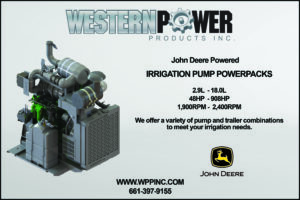
Part Two of this report will be posted separately.
DISCLAIMER OF RESPONSIBILITY; Waterwrights.net strives to provide its clients with the most complete, up-to-date, and accurate information available. Nevertheless, Waterwrights.net does not serve as a guarantor of the accuracy or completeness of the information provided, and specifically disclaims any and all responsibility for information that is not accurate, up-to-date, or complete. Waterwrights.net’s clients therefore rely on the accuracy, completeness and timeliness of information from Waterwrights.net entirely at their own risk. The opinions expressed in this report are those of the author and do not represent any advertisers or third parties.
ALL RIGHTS RESERVED. Copyright 2023 by WaterWrights.net
Westlands Water District
3130 N. Fresno Street, Fresno CA 93703 Phone:559/224-1523
Board: Jeff Fortune -President, Jim Anderson – Vice President, Frank Coelho Jr., William Bourdeau, Kevin Assemi, Ross Franson, Jeremy Hughes, Ernie Costamagna & Justin Diener.
Staff: Allison Febbo-General Manager, Jose Gutierrez-Lt. General Manager, Jon Rubin-Attorney, Russ Freeman-Deputy GM Resources, Kitty Campbell-Supervisor of Resources, Bobbie Ormonde-VP of Finance & Administrative Affairs, Bill Pierce Director O&M, Jim Carter-IT Guru and Elizabeth Jonasson- Public Affairs Representative.
About: Without irrigation, farming in the Westlands area of California would be limited and ineffectual. The history of Westlands is one of continual adaptation, careful water stewardship and advanced technology. By maintaining a fierce commitment to sustainability, the Westlands’ comprehensive water supply system continues to adapt, educate, and surpass conservation goals. Throughout its history, Westlands Water District has demonstrated a lasting dedication to water conservation and recognized that the long-term survival of its farms depends on the effective management of California’s precious water resources. From www.wwd.ca.gov
SGMA: Westland WD is in the Westside Subbasin and the Westlands WD GSA. DWR #5-022.09





